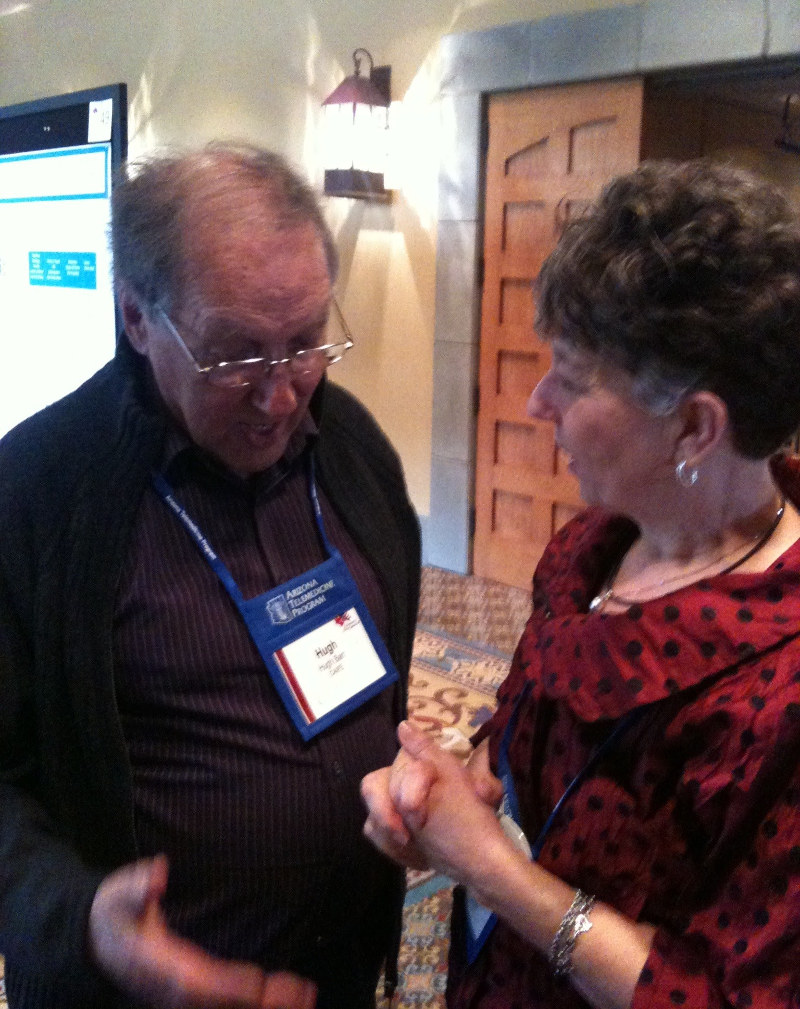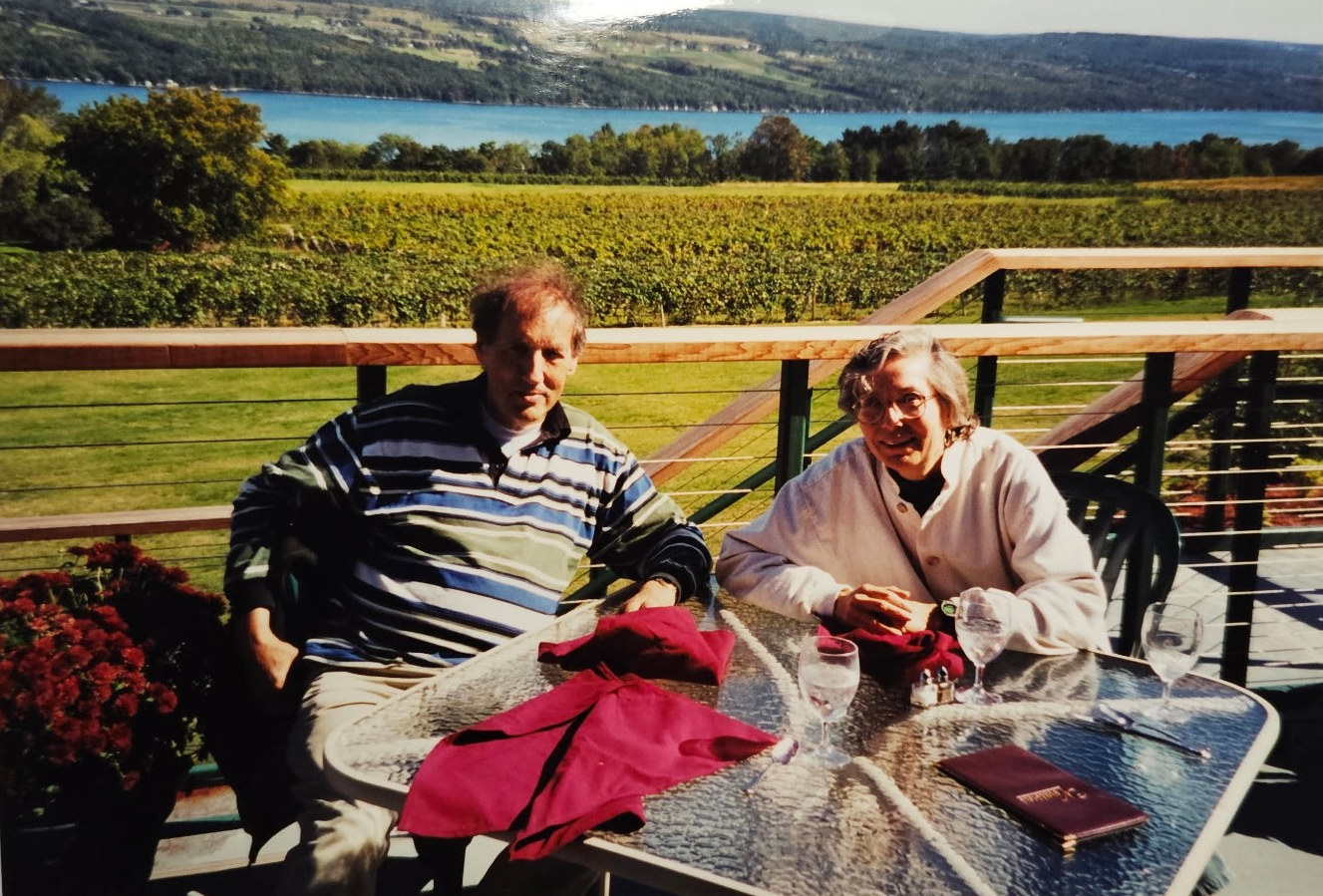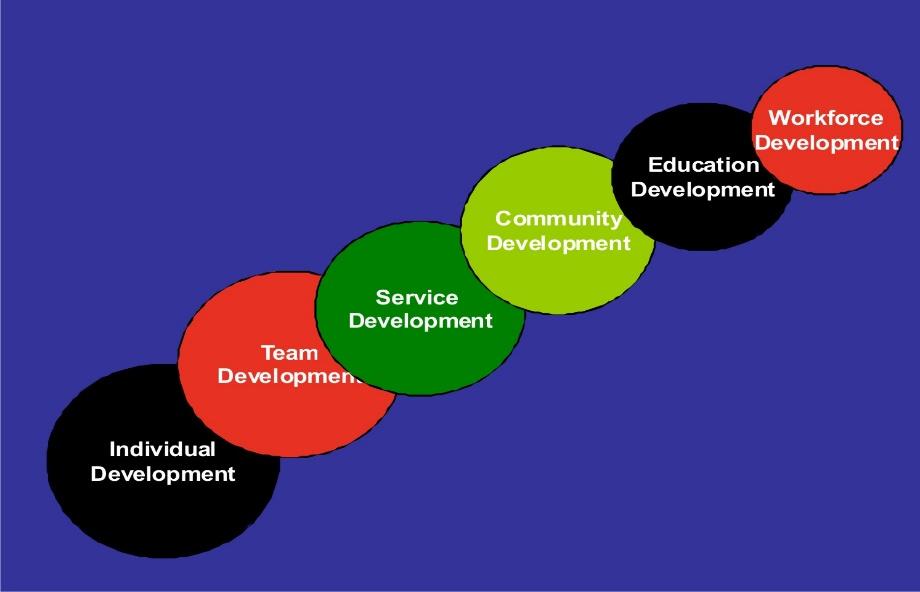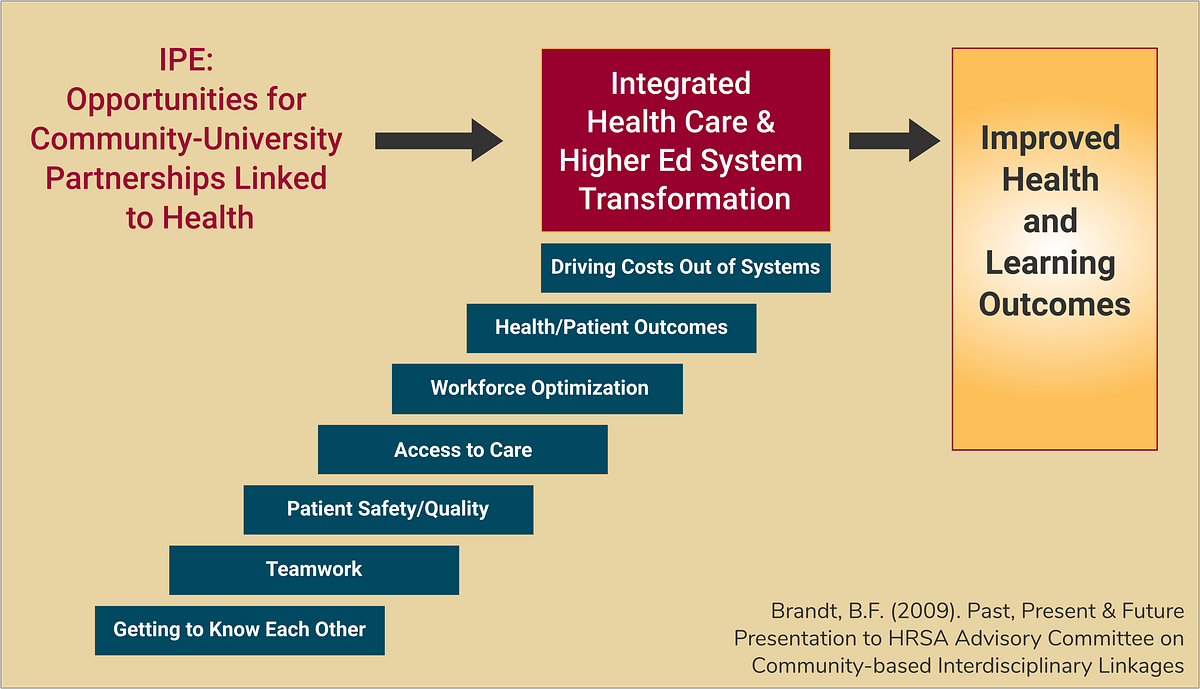A Personal Tribute to IPE Pioneer, Hugh Barr, MIL, PhD, Hon DSc
1935-2025
Barbara Fifield Brandt, PhD, EdM, FNAP
Director Emerita
National Center for Interprofessional Practice and Education
Madeline Schmitt, PhD RN, FAAN, FNAP
University of Rochester
Emeritus Editor, Journal of Interprofessional Care
On August 25, the interprofessional health field lost a true IPE Pioneer, Dr. Hugh Barr, who was our mentor, supporter, cheerleader and friend. He was one of the pre-eminent scholars and foundational thinkers in interprofessional education and collaborative care during his “second” career, following in the footsteps of an earlier generation of international interprofessional groundbreakers. In 2023, the National Center for Interprofessional Practice and Education recognized his substantial contributions to our field by awarding him the Nexus Pioneer Award. Each of us learned a great deal from Hugh as our careers intertwined with his for a number of years. Mattie worked with Hugh, U.S. and other international colleagues during the dawn of the interprofessional movement dating to the late 1970s and 1980s. In the 2000s Hugh’s thoughts guided us as we worked to solidify the field of interprofessional education and collaborative practice in the United States.
Dr. Hugh Barr was a founding member of the scholarly interdisciplinary and interprofessional team that created the UK Centre for the Advancement of Interprofessional Education (CAIPE). Hugh served as its chair and guided the CAIPE for nearly forty years. In addition, for decades he worked tirelessly to uplift the rigor of IPE as a scholarly field by serving as the editor of the Journal of Interprofessional Care. Hugh’s books, papers and speaking as a solo voice and collaborator with his CAIPE colleagues and international protégés provide the foundation for fundamental IPE work today. We were fortunate to spend time with him in London, Greenwich, Oxford, Stockholm, Vancouver, Minneapolis, Denver, Tucson, Washington, D.C. and other locations, as we wrestled with the big questions of the field. Too, we experienced him as a good friend in less formal “down” times at his English cottage and in our homes. And, we were not the only ones in his vast global circle who enjoyed both his professional and personal generosity.

Hugh and Barb
Collaborating Across Borders III
Tucson, AZ 2011
After two decades of scholarly collaboration, Hugh and other CAIPE scholars published a series of seminal books in the field beginning in 2005, drawing upon a wide-range of theoretical and research literature in the social sciences.1,2,3,4 These books and CAIPE papers are essentials and should be on the physical or digital shelves of those of us who are committed to IPE as a career. The CAIPE theories and constructs have not become obsolete over time, but are available to be wrestled with, tested, built upon, used to underpin our everyday work, and become the basis of rigorous research methodologies advanced by the next generation of interprofessional scholars. Hugh taught us that there is no “one right way” and that IPE is a creative field.
Such is the case of the InterProfessional Activity Classification Tool (InterPACT) introduced by Scott Reeves, Andreas Xyrichis, and Merrick Zwarenstein in 2018.5 The CAIPE team created an elegant framework of teamwork, collaboration, coordination, and networking in 2010 (p 44).4 We have used the model alone to facilitate rich conversations and understanding in practice about the sociological relationships between the professional players and others. Over time, the Reeves, Xyrichis and Zwarenstein team introduced the next generation of thinking in the validated tool for use in the “evidence-based” world.5,6 Its meaning and use, however, come alive in digesting the original roots of Hugh and the CAIPE team’s synthesis of substantial literature.

Hugh and Mattie
Finger Lakes, New York, undated
One fond memory we jointly have of Hugh is what we call the “Where in the world is Hugh Barr?” incident. His sharing of an early IPE “ladder” diagram presented by him at the All Together Better Health IV conference in Sweden in 2008 became the basis for the U.S. National Center’s vision of the “Nexus”. Hugh had given a plenary lecture with a provocative question: “Is Teamwork a destination?” He shared his concern that his U.S. colleagues—that would be us--were over-emphasizing teams and linking IPE to patient safety.7 He then presented a conceptual framework of stages and developmental purposes for interprofessional education and collaborative care with workforce development as the highest goal.
Hugh’s plenary in Sweden didn’t come from a bolt of lightning one day. A number of forces were lifting up IPE globally and eventually in the U.S. At that time, Hugh and Mattie were participating in the development of a United Nations report, Framework for Action in Interprofessional Education and Collaborative Practice, led by Jean Yan at the UN and John Gilbert of Canada. A presentation focused on the work of the Study Group was also presented at the 2008 conference. The Framework itself was published in 2010.8 Papers informing the Framework were published in an issue of the Journal of Interprofessional Care, also in 2010 9,10,11 with a commentary written by Hugh.12
In the Spring of 2009, we [Barb and Mattie] received invitations to speak at the national Health Resources and Services Administration (HRSA) Community-based Interdisciplinary Linkages, a Congressionally mandated committee. With a short time to prepare, the charge to us was to describe how interprofessional education and collaborative practice had relevance to health workforce development in the United States, particularly in rural and underserved areas. The request came at a precarious time when we were working with our U.S. colleagues to rebuild the field after years of decline. We were eager to present to and influence prominent policy makers and stakeholders to continue to strengthen our work, which eventually resulted in HRSA’s commitment to create a national center.
While preparing for the 2009 HRSA presentation, Barb recalled the model Hugh had presented in Sweden in 2008. We had both attended, but without handouts or a paper, she could only produce circles on “the back of a napkin”. Mattie did not have it either. Barb knew she had to get in touch with Hugh to help understand his thinking for her presentation. The problem was that Hugh was traveling the globe, researching and documenting IPE implementation internationally.13 No one seemed to know where Hugh was: Africa, Thailand, South America, India, or Australia? Mattie, then a visiting professor on interprofessional education at the University of Virginia, found Hugh via email in Australia. He emailed the model. Barb knew it was something to build on.

Barr, H. Is Teamwork a Destination? All Together Better Health IV, 2008.
Based upon her own experiences and scholarship, the 2009 “Stair Step” model14 presented by Barb at the HRSA meeting was inspired directly by the one presented by Hugh at the plenary in 2008. The top stages, like Hugh’s model, are aspirational, with our vision that we need this work to result in real and documented outcomes, not just theories.

The following Spring, 2010, Mattie was Chair of the national Interprofessional Education Collaborative (IPEC) committee of twelve leaders from 6 national professional education associations charged with developing a high-level statement of essential educational “competencies” for interprofessional practice. This first IPEC competency iteration15 was subsequent to the Canadian national statement.16 The consensus IPEC Competencies were critical for elevating IPE in the United States, setting the stage for a U.S. national center.
Inspired by Hugh about possibilities, Barb described the bold vision of “the Nexus” in the first page of the grant proposal to establish the National Center to HRSA in 2012. The award led to the development of the National Center for Interprofessional Practice and Education at the University of Minnesota in the U.S. with Barb as its inaugural Director. The National Center, called by many “The Nexus”, has since used the Hugh-inspired Stair Step model with many organizations and groups to advance interprofessional strategies.
We owe it to Hugh to keep aspiring to the highest possible future of IPE.17
We love you and miss you, Hugh Barr.
Barb and Mattie
References (Hugh would not expect anything less).
- Meads, G., Ashcroft, J. with Barr, H., Scott, R., & Wild, A. (2005). The Case for Interprofessional Collaboration. Blackwell Publishing, Oxford.
- Barr, H., Koppel, I., Reeves, S., Hammick, M.& Freeth, D. (2005). Effective Interprofessional Education: Argument, Assumption & Evidence. Blackwell Publishing, Oxford.
- Freeth, D., Hammick, M., Reeves, S., Koppel, I & Barr, H. Effective Interprofessional Education: Development, Delivery & Evaluation. Blackwell Publishing, Oxford.
- Reeves, S., Lewin, S., Espin, S., & Zwarenstein, M. Series Editor: Hugh Barr. (2010). Interprofessional Teamwork for Social Care. Wiley-Blackwell, Chichester.
- Xyrichis, A, Reeves, S, Zwarenstein, M. (2018). Examining the nature of interprofessional practice: An initial framework validation and creation of the InterProfessional Activity Classification Tool (InterPACT). Journal of Interprofessional Care, 32(4):416-425.
- Reeves, S., Xyrichis, A., & Zwarenstein, M. (2018). Teamwork, collaboration, coordination, and networking: Why we need to distinguish between different types of interprofessional practice. Journal of Interprofessional Care, 32(1):1-3.
- Weinstein, R. S., Brandt, B. F., Gilbert, J. H., & Schmitt, M. H. (2013). Editorial. Bridging the quality chasm: interprofessional teams to the rescue? American Journal of Medicine, 126(4), 276- 277.
- World Health Organization. (2010). Framework for action on interprofessional education and collaborative practice. Geneva: WHO.
- Gilbert, J.H.V. (2010). The global emergence of IPE and collaborative care. Journal of Interprofessional Care, 24(5):473-474.
- Rodger, S. & Hoffman, SJ. on behalf of the World Health Organization Study Group on Interprofessional Education and Collaborative Practice. (2010). Where in the world is interprofessional education? A global environmental scan. Journal of interprofessional Care, 24(5), 479-491.
- Mickan, S., Hoffman, SJ. & Nasmith, L. on behalf of the World Health Organization Study Group on Interprofessional Education and Collaborative Practice. (2010). Collaborative practice in a global health context: Common themes from developed and developing countries. Journal of Interprofessional Care, 24(5), 492-502.
- Barr, Hugh. (2010). The WHO Framework for Action: Commentary. Journal of Interprofessional Care. 24(5):475-478
- Barr, H. Interprofessional Education-The genesis of a global movement. (2016). Centre for the Advancement of Interprofessional Education. CAIPE. London. https://www.caipe.org/resources/publications/barr-h-2015-interprofessional-education-genesis-global-movement
- Brandt, B.F. National Center for Interprofessional Practice and Education: A bold new vision for health. (2014). Journal of National AHEC Organization, 30: 5-9.
- Interprofessional Education Collaborative Expert Panel. (2011). Core Competencies for Interprofessional Collaborative Practice: Report of an Expert Panel. Washington DC: 2011.
- Canadian Interprofessional Health Collaborative. (2010). A National Interprofessional Competency Framework. Vancouver: Canadian Interprofessional Health Collaborative, College of Health Disciplines, University of British Columbia.
- Brandt, BF, Kertz, JS, & Arenson, C. (2023) National Center for Interprofessional Practice and Education, 2023: reflecting back, looking forward. Journal of Interprofessional Care. V. 37 Supplement 1. S4-S14.
